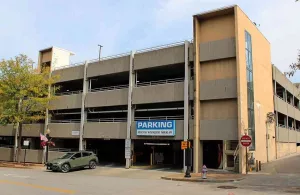Deconstruction vs Demolition
Published by John on
Copied from Green Building Advisor
When a building is too dilapidated to renovate, do you demolish it or take it apart for salvage?

Image Credit: Brad Guy
Demolition is pretty straightforward—you test for and then remove any hazardous regulated materials before you knock the building down and crunch it up for the landfill. Masonry rubble may make its way to clean fill or aggregate and some metals are likely to get pulled out for recycling.
Two primary types of deconstruction
Deconstruction is “unbuilding”—taking a building apart, often reversing the order of the construction of the building. There are two general categories of deconstruction.
Selective deconstruction (or “soft strip” or “skim”) is going in before demolition and removing easy, high-value materials such as solid, paneled interior doors; lighting fixtures; “wavy” glass windows; or maybe even hardwood flooring.
Whole-house deconstruction includes soft-stripping but goes further to take apart and salvage the structure: framing lumber, sheathing, even bricks. So how do you know if a home should be deconstructed instead of demolished?
Assessing for deconstruction
Deconstruction is a business, just like demolition. Either approach requires a building assessment to price the job. A deconstruction building assessment and the resulting bid can be quite different than demolition in two ways:
1. The tax-deductible value of the donated materials – Many deconstruction operations are run by non-profit organizations. One reason for this is that a non-profit deconstruction firm can factor the tax-deductible donation benefit to the client into the bid. This is an added benefit to the non-profit approach to deconstruction.
2. Manual labor intensity – Deconstruction uses less machinery and more labor, so worker safety considerations and costs can be higher and the job may take longer to complete. Hazardous material regulation and management can be more difficult or onerous for deconstruction than demolition.
If deconstruction is cost-competitive with demolition, it is a clear winner: It is better for the environment (greater reuse and recycling, cleaner cleared lots, and less disposal) and for the local economy (more jobs and availability of lower-cost building materials).
The Deconstruction and Reuse Network has “4 Easy Assessment Steps” that make a lot of sense for evaluating the deconstruction option.
Finding (or creating) deconstruction firms
“There has been an explosion of deconstruction firms, salvage operations, and reuse stores,” says Brad Guy, Assistant Professor of Architecture at Catholic University, co-author of the book on deconstruction, Unbuilding, and Founder/past President of the Building Materials Reuse Association.
Brad recommends two approaches to locating a local deconstruction firm:
1. The BMRA directory – The BMRA directory that Brad developed started about 4 years ago with around 1200 or so. It is searchable by a map of North America and by zip code.
2. The local phone book – “You would think that the Web is the first and best place to search,” says Brad. “But I find that you get the best results by using key words and searching the local hardcopy Yellow Pages.” You get to talking and word of mouth fills in the blanks between the entries in the phone book. Key words I use include: salvage, demolition, wrecking, lumber, Habitat for Humanity ReStores, and ANY local green building program.”
Brad is also keen to point out that there are opportunities to develop deconstruction/reuse stores within affordable housing operations. “It’s a good fit,” says Brad. “I have worked with several local non-profit housing organizations on start-up decon/reuse store operations, including the Preservation Resource Center of New Orleans.”
Brad and others have developed a number of resources for deconstruction/salvage retail business development; listed below are just a few
Resources (in rough chronological order, most recent first)
“A Guide to Deconstruction” by Brad Guy
Deconstruction and Reuse Reports and Studies (25 papers)
Best Practices: Building Material Reuse Industry
United Villages: A Case Study on Building Materials Reuse in Portland, Oregon
“Deconstruction: Building Disassembly and Material Salvage: The Riverdale Case Study” by NAHB Research Center for EPA
“A Guide to Deconstruction” by NAHB Research Center for HUD
“Background on Asbestos” by Laurence Malloy
“New Regulations for Lead Based Paint – Implications for Salvage and Deconstruction” by Dirk Wassink for BMRA
GBA RESOURCES




